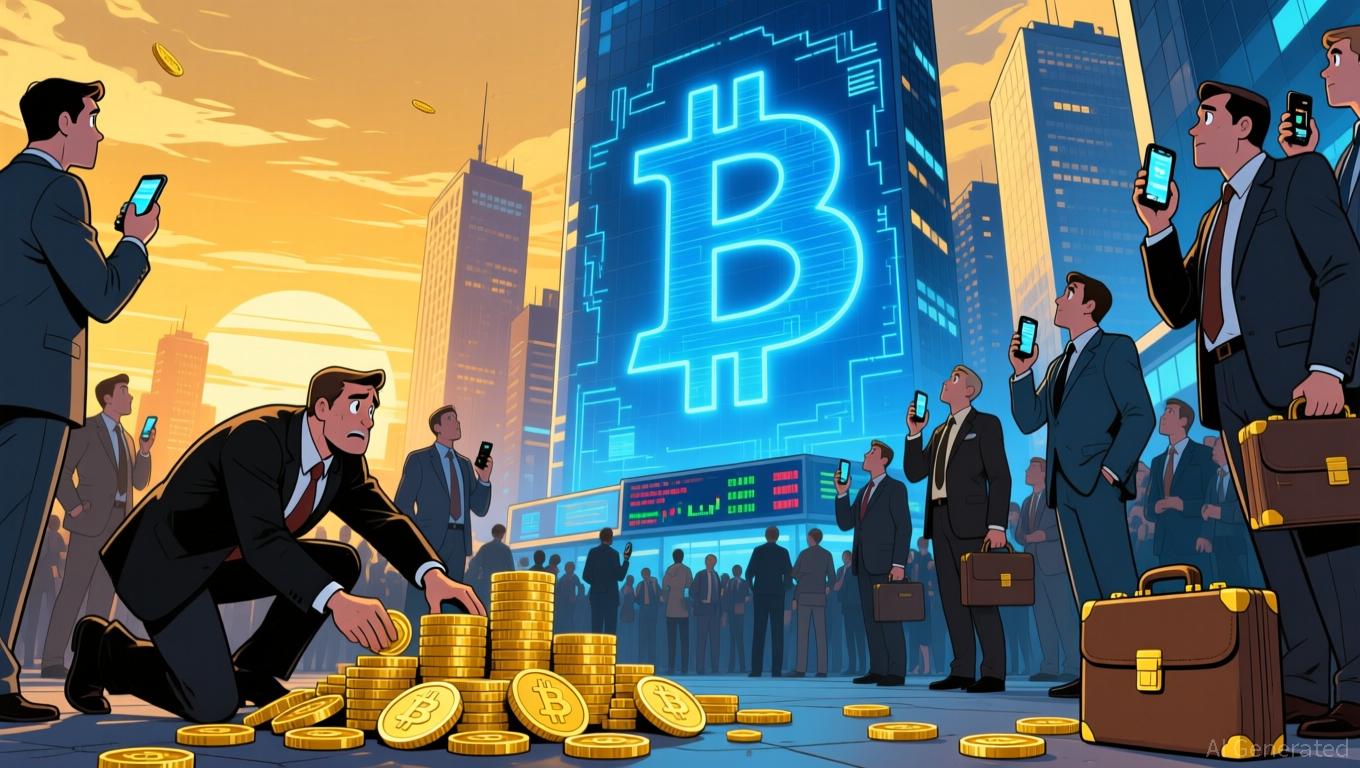BNY's Stablecoin Fund Connects Conventional Finance with Around-the-Clock Digital Markets
- BNY Mellon launches BSRXX, a regulated fund enabling stablecoin issuers to hold GENIUS Act-compliant reserves without direct stablecoin investments. - The fund supports 24/7 digital markets by providing ultra-safe, short-term liquidity under federal requirements for stablecoin backing. - Anchorage Digital's participation highlights growing institutional adoption, with stablecoin reserves projected to reach $1.5 trillion by 2030. - BNY's $57.8T custody expertise positions it as a key infrastructure provid
BNY Unveils Stablecoin Reserves Fund to Strengthen Institutional Liquidity Framework
The Bank of New York Mellon Corp. (NYSE: BK) has rolled out the BNY Dreyfus Stablecoin Reserves Fund (BSRXX), a government money market fund crafted to facilitate institutional integration of digital assets. This fund offers a regulated option for stablecoin issuers to store reserves in compliance with
The fund’s first investment comes from Anchorage Digital, the nation’s first federally chartered crypto bank. Nathan McCauley, Anchorage Digital’s Co-Founder and CEO, described the launch as marking a "new era for stablecoin infrastructure in the U.S.," stressing the value of regulatory discipline and openness in connecting traditional finance with digital assets
Industry forecasts indicate
BNY, a frontrunner in digital asset solutions, oversees more than 80% of U.S. digital asset ETFs and safeguards over half of the world’s tokenized fund assets
Disclaimer: The content of this article solely reflects the author's opinion and does not represent the platform in any capacity. This article is not intended to serve as a reference for making investment decisions.
You may also like
XRP News Today: Clearer Regulations and Growing Retail Interest Drive XRP ETF to $26M Increase
- Canary Capital's XRPC ETF surged to $26M in 30 minutes, exceeding $17M expectations and outperforming prior altcoin ETF debuts. - XRP saw $28M weekly inflows amid crypto volatility, contrasting Bitcoin and Ethereum's $1.37B combined outflows. - Post-SEC settlement legal clarity and $125M fine in 2025 positioned XRP as a regulated altcoin, attracting $2.4B in ETF AUM. - Technical indicators show XRP trading above $2.50 with 68 RSI, but $3.36B Open Interest remains below October's $9B peak.

Bitcoin Updates: Bitcoin or Gold by 2035? Saylor’s Wager Challenges Skeptics Amid Concerns Over Debt
- Michael Saylor predicts Bitcoin will surpass gold as the largest asset class by 2035, citing its capped supply and growing adoption. - MicroStrategy (MSTR) holds 641,692 BTC ($68B) via perpetual preferred stock issuances, reflecting Saylor's aggressive Bitcoin accumulation strategy. - Critics like Jim Chanos question Strategy's debt-fueled Bitcoin bets, noting its 22% stock decline and Bitcoin's $2.04T market cap lagging gold's $29.2T valuation. - Saylor argues Bitcoin's "hard cap" and institutional adop

Solana News Update: Merging Privacy with Speed: Zcash and Solana at the Forefront of Institutional Crypto Expansion
- Zcash (ZEC) gains momentum after Tyler Winklevoss's $50M investment, rebranding his firm as Cypherpunk Technologies and acquiring 1.25% of ZEC supply. - Zenrock's zenZEC token bridges Zcash privacy with Solana's speed, enabling DeFi participation while preserving anonymity through MPC technology. - Solana's institutional adoption grows with Classover expanding holdings to 58,142 SOL and Japan's FSA supporting stablecoin issuance by major banks . - Privacy-focused crypto and DeFi innovations, backed by $5

DOGE rises by 2.56% as Poain AI Staking goes live
- Poain BlockEnergy launched an AI Smart-Staking program for DOGE , coinciding with a 2.56% 24-hour price rise to $0.17475. - The program offers flexible staking terms (e.g., 3.0% in 2 days) and AI-optimized security for DOGE and major tokens like BTC/ETH. - Backtests show DOGE's 5% surges often lead to -15.7% 30-day returns, underperforming passive holding strategies. - Poain's AI-driven approach aims to diversify crypto yields but highlights risks in chasing short-term price spikes.